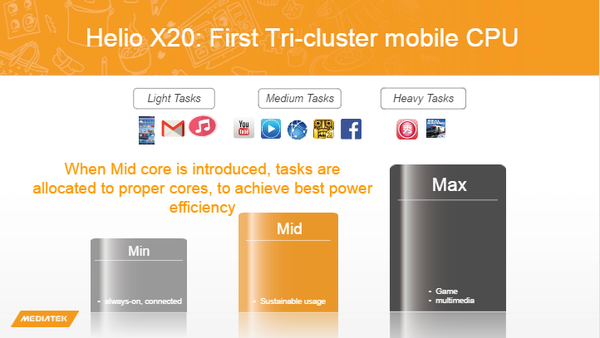
MediaTek has announced its new mid-range chipset at the Mobile World Congress, the Helio P20. Successor to the Helio P10, the P20 is an octa-core chip that features higher clocked Cortex-A53 cores and is based on the 16nm fabrication process.
The ‘LITTLE’ cluster on the Helio P20 comprises of four A53 cores and four ‘big’ A53 cores clocked at 2.3GHz. It also features a Mali-T880MP2 GPU clocked at 900MHz and features a memory controller that can support LPDDR3 RAMs clocked at up to 933MHz or LPDDR4X RAM clocked at up to 1600MHz.
Other specs of the Helio P20 include support for up to 24MP or dual 13MP camera sensors at the rear, 2160p30 H.264 and HEVC video decode, and support for LTE Cat. 6 for maximum download speeds of up to 300Mbps.
Since this chipset is based on the 16nm fabrication process, it should be more power efficient than previous chips from MediaTek and also heat up less when under load.
MediaTek expects devices powered by its new Helio P20 chipset to start showing up from the second half of this year.
Samsung and Qualcomm have already announced their mid-range chipsets based on the cutting edge 16nm fabrication process, so its not surprising to see MediaTek follow suit. With competition in the smartphone market reaching new levels, chip makers are now also looking to better fulfil OEM and consumer demand by packing more advanced technologies in their mid-range chips.
[Via AnandTech]

















